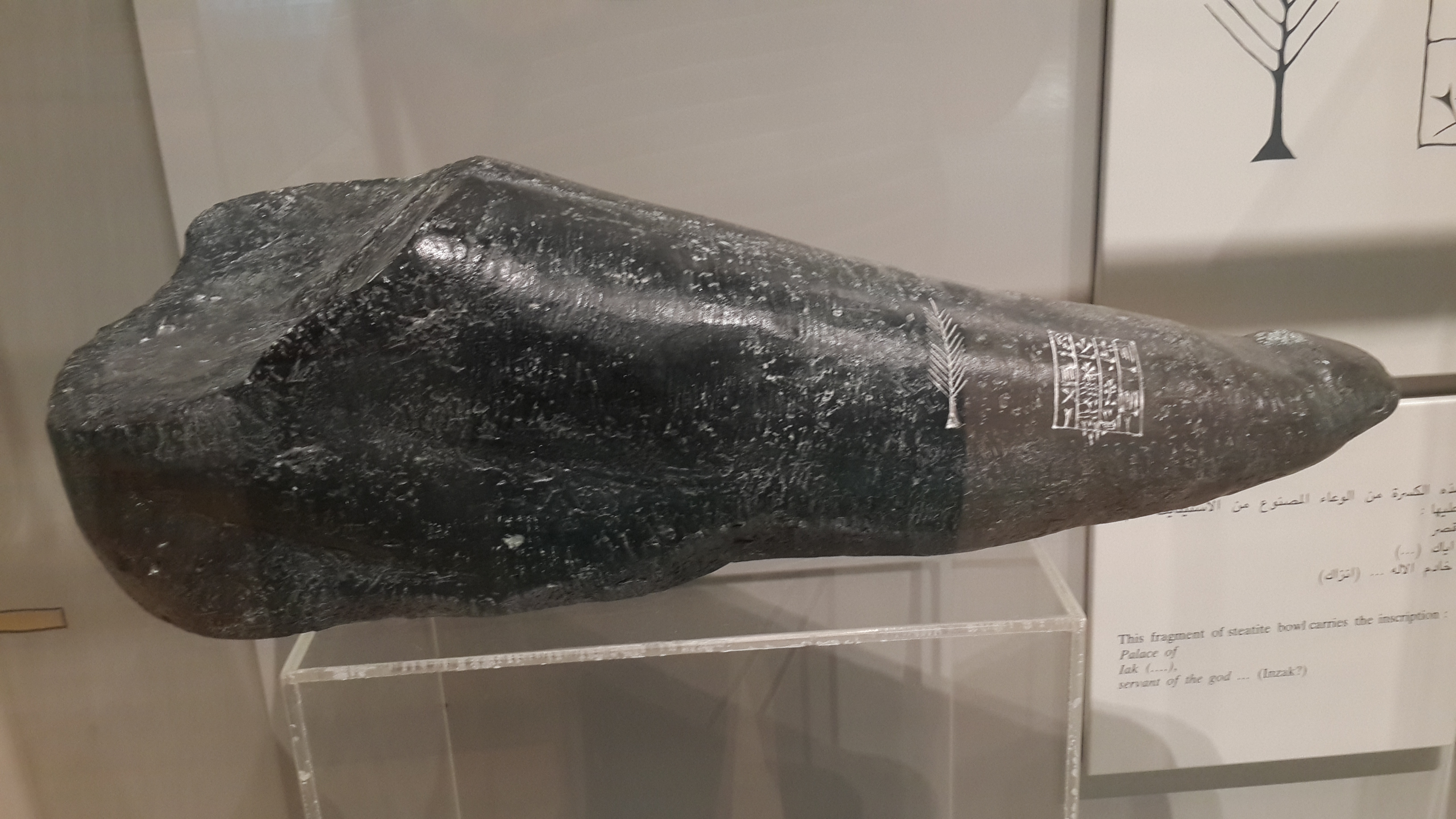Durand Stone on:
[Wikipedia]
[Google]
[Amazon]
 The Durand Stone is an artifact in
The Durand Stone is an artifact in
 The Durand Stone is an artifact in
The Durand Stone is an artifact in Bahrain
Bahrain ( ; ; ar, البحرين, al-Bahrayn, locally ), officially the Kingdom of Bahrain, ' is an island country in Western Asia. It is situated on the Persian Gulf, and comprises a small archipelago made up of 50 natural islands and an ...
dating back to the Kassite
The Kassites () were people of the ancient Near East, who controlled Babylonia after the fall of the Old Babylonian Empire c. 1531 BC and until c. 1155 BC (short chronology).
They gained control of Babylonia after the Hittite sack of Babylon ...
period (1600 BC — 1155 BC). Named after Captain Edward Law Durand who had first identified it, the stone is a 25–30 cm wide and 70–80 cm long black basalt
Basalt (; ) is an aphanite, aphanitic (fine-grained) extrusive igneous rock formed from the rapid cooling of low-viscosity lava rich in magnesium and iron (mafic lava) exposed at or very near the planetary surface, surface of a terrestrial ...
sculpture possibly in the shape of a prow of a boat or an animal's tongue, with a cuneiform
Cuneiform is a logo-syllabic script that was used to write several languages of the Ancient Middle East. The script was in active use from the early Bronze Age until the beginning of the Common Era. It is named for the characteristic wedge-sha ...
inscription.
Contents
The inscription, in Old Babylonian cuneiform script, was translated by Henry Rawlinson to read: "The palace of Rimum, servant of (the god)Inzak
Inzak (also Enzag, Enzak, Anzak; in older publications Enshag) was the main god of the pantheon of Dilmun. The precise origin of his name remains a matter of scholarly debate. He might have been associated with date palms. His cult center was Ag ...
, (and) man of (the tribe of) Agarum".
Inzak, son of Enki
, image = Enki(Ea).jpg
, caption = Detail of Enki from the Adda Seal, an ancient Akkadian cylinder seal dating to circa 2300 BC
, deity_of = God of creation, intelligence, crafts, water, seawater, lakewater, fertility, semen, magic, mischief
...
, was a principal god of Bahrain, and the Durand Stone provides archaeological evidence for identifying these islands as 'the abode of the blessed' of Dilmun
Dilmun, or Telmun, ( Sumerian: , later 𒉌𒌇(𒆠), ni.tukki = DILMUNki; ar, دلمون) was an ancient East Semitic-speaking civilization in Eastern Arabia mentioned from the 3rd millennium BC onwards.
Based on contextual evidence, it was l ...
referred to by Sumerian literature
Sumerian literature constitutes the earliest known corpus of recorded literature, including the religious writings and other traditional stories maintained by the Sumerian civilization and largely preserved by the later Akkadian and Babylonian em ...
.
History
Originally housed in the "holy of holies" of the Madrasseh-i Daood mosque (now destroyed) in Bilad Al Qadeem, it was spotted in 1878 by Captain Edward Law Durand (first-assistant resident to thePersian Gulf Residency
The Persian Gulf Residency () was an official colonial subdivision (i.e., residency) of the British Raj from 1763 until 1947 (and remained British protectorates after Indian independence in 1947, up to 1971), whereby the United Kingdom maint ...
), who tricked the mullah
Mullah (; ) is an honorific title for Shia and Sunni Muslim clergy or a Muslim mosque leader. The term is also sometimes used for a person who has higher education in Islamic theology and sharia law.
The title has also been used in some Miz ...
s into releasing it to him by telling them it was a fire-worshipper's stone and therefore unIslamic. The stone itself, a diorite
Diorite ( ) is an intrusive igneous rock formed by the slow cooling underground of magma (molten rock) that has a moderate content of silica and a relatively low content of alkali metals. It is intermediate in composition between low-silic ...
, is believed to originate from Oman
Oman ( ; ar, عُمَان ' ), officially the Sultanate of Oman ( ar, سلْطنةُ عُمان ), is an Arabian country located in southwestern Asia. It is situated on the southeastern coast of the Arabian Peninsula, and spans the mouth of t ...
or southeastern Iran
Iran, officially the Islamic Republic of Iran, and also called Persia, is a country located in Western Asia. It is bordered by Iraq and Turkey to the west, by Azerbaijan and Armenia to the northwest, by the Caspian Sea and Turkmeni ...
.
The contents of the inscription helped archaeologists conclude that Bahrain was the location of the Dilmun
Dilmun, or Telmun, ( Sumerian: , later 𒉌𒌇(𒆠), ni.tukki = DILMUNki; ar, دلمون) was an ancient East Semitic-speaking civilization in Eastern Arabia mentioned from the 3rd millennium BC onwards.
Based on contextual evidence, it was l ...
civilization.
Today
According to the records ofCharles Belgrave
Sir Charles Dalrymple Belgrave KBE (9 December 1894 – 28 February 1969) was a British citizen and advisor to the rulers of Bahrain from 1926 until 1957, as "Chief Administrator" or "adviserate". He first served under Shaikh Hamad ibn Isa Al Kha ...
, the Durand Stone was destroyed during the Second World War
World War II or the Second World War, often abbreviated as WWII or WW2, was a world war that lasted from 1939 to 1945. It involved the vast majority of the world's countries—including all of the great powers—forming two opposin ...
. A replica of the Durand Stone lies in the Bahrain National Museum
The Bahrain National Museum ( ar, متحف البحرين الوطني) is the largest and oldest public museum in Bahrain. It is situated in Manama, adjacent to the National Theatre of Bahrain. Opened on 15 December 1988 by the Emir of Bahrain ...
.
References
{{reflist Sculptures in Bahrain Sculpture of the Ancient Near East Stone sculptures Dilmun